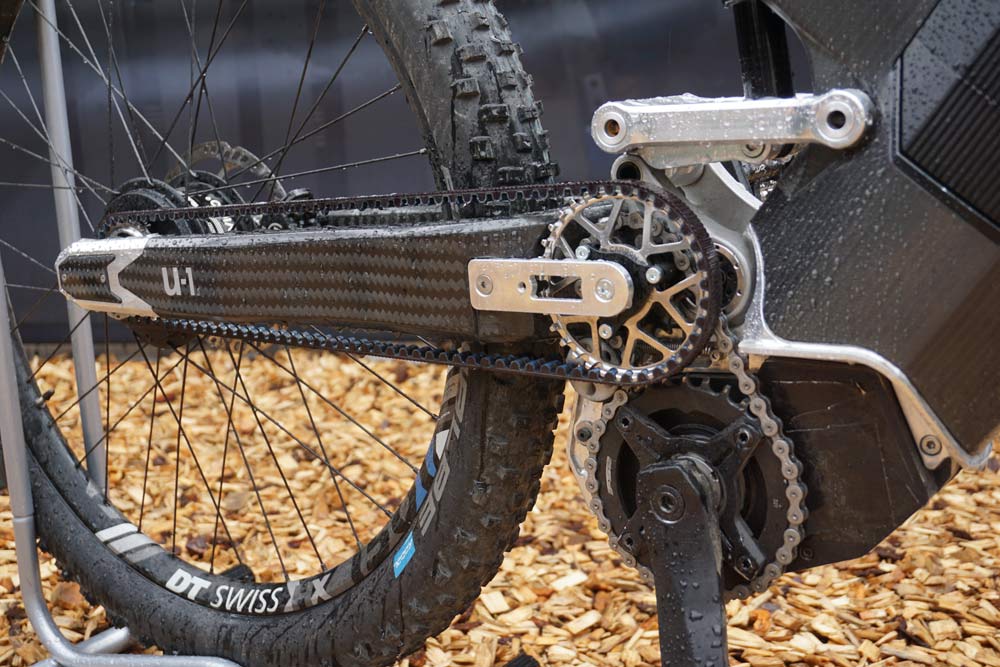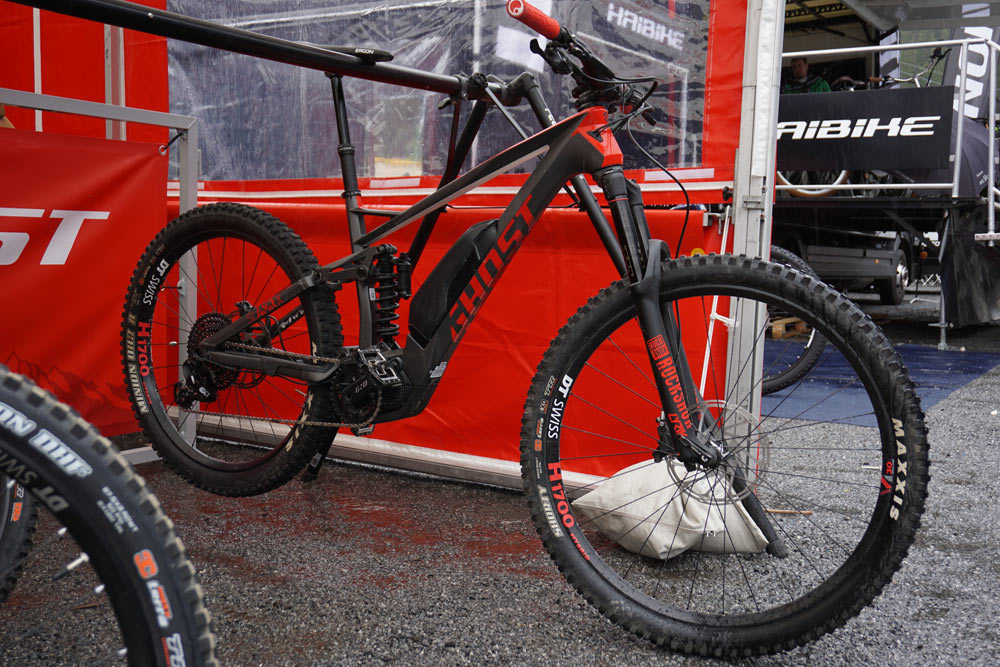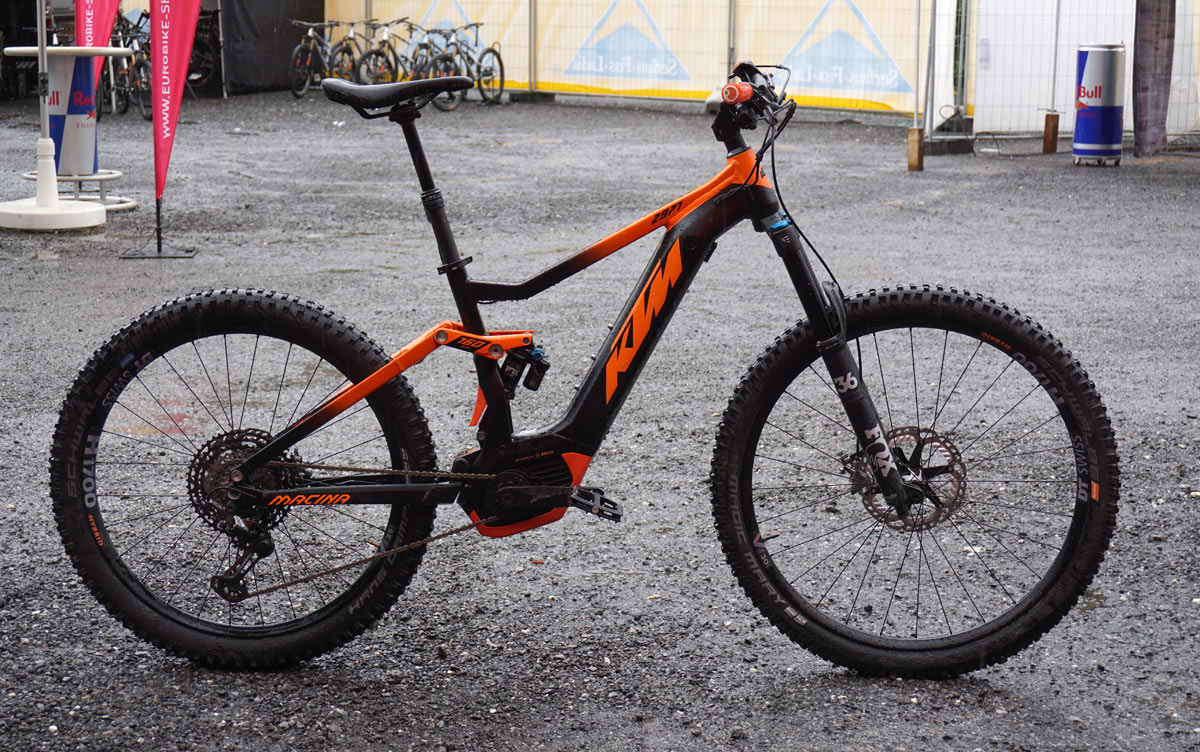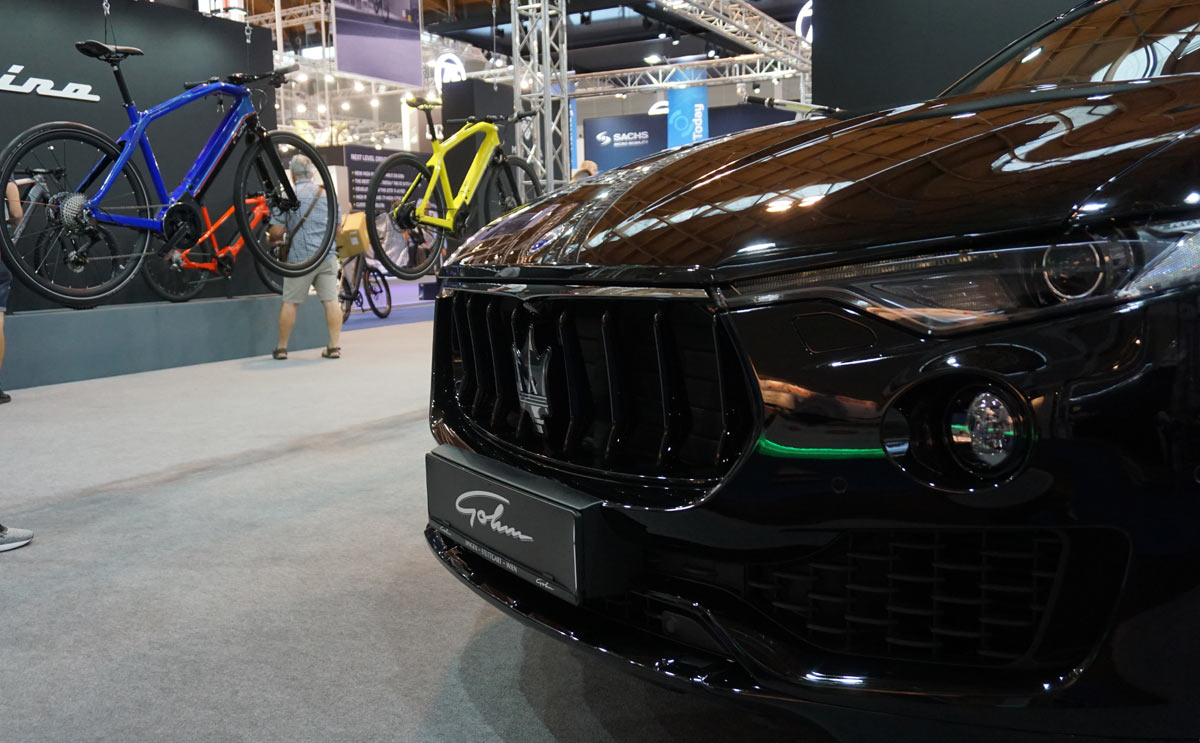Yeah, yeah, e-bikes. But here’s the deal, they are helping drive the bike industry right now, particularly in Europe. From a technical, feature-wise standpoint, there are a couple of trends worth noting, and we’ll cover those first. But looking much farther down the road, we had a few good conversations with product managers and saw brands that seem more interested in how the automotive industry is going to take over the e-Bike industry.
Or, as some of those companies and Eurobike itself are calling it, e-Mobility. And that naming is important…because it’s not going to be just e-Bikes, it’s going to be various personal transportation options using electric assist. But first, the tech…
29 in the front, 27.5 in the back
It was almost comical how many eMTB brands were showing off new enduro level mountain bikes using a 29er front wheel and 27.5 rear wheel and calling it Moto-something. Motocross bikes use a similar setup, and now we’re seeing it on long travel trail to enduro e-mountain bikes, too.
Ghost and KTM are two such brands, both shown here, and the idea is pretty simple: Use a bigger wheel diameter with a leaner, lighter tire to roll over obstacles in the front, then put a fatter, wider 27.5+ tire in the back. We expect more of this setup to start showing up in 2019 and beyond.
Batteries are disappearing
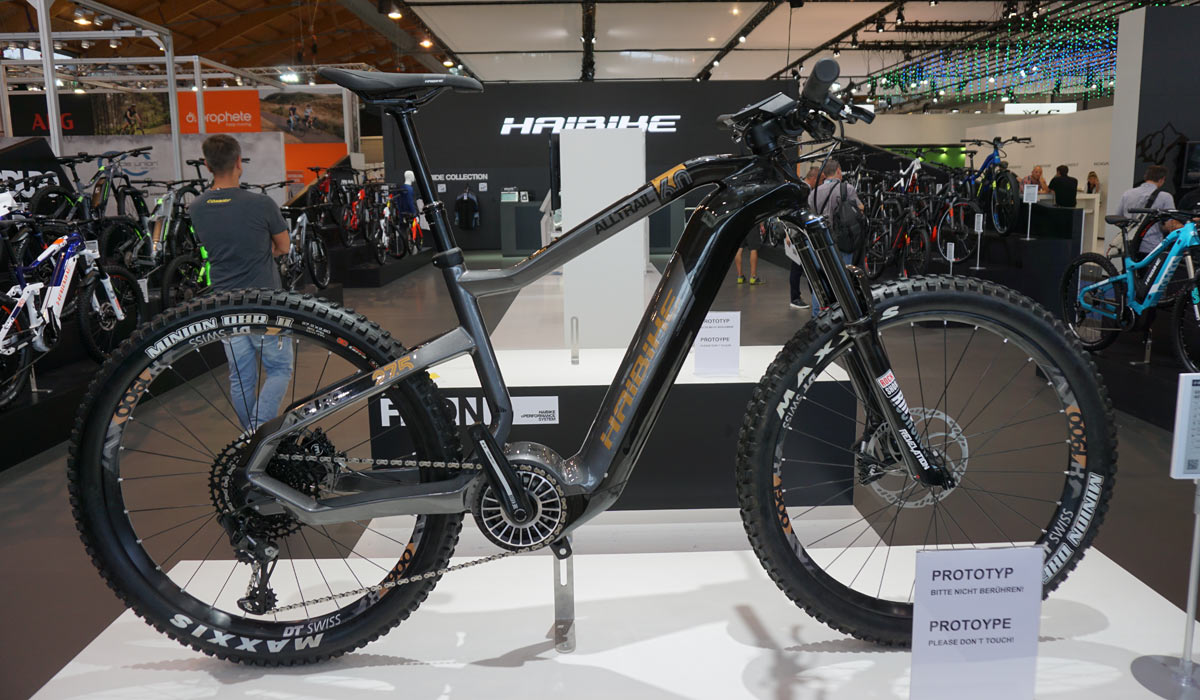
The first e-bikes were kinda ugly. They looked like regular bikes with motors and batteries bolted on and wired up wherever they could fit. Because that’s what they were. Over the past couple years, downtubes and frames have become more shapely to match the battery pack’s lines, but the next step is frames that completely integrate the battery into the tubes. 2019 will see a ton of these, like the Haibike prototype shown above that slides it completely into the downtube. Specialized’s Turbo models do a really good job of this, too, making it harder to tell they’re e-bikes save for the extra bulky downtube.
For road bikes, you might be riding next to an e-bike and not even know it until you’re sucking wind to keep up. That’s thanks to eBikeMotion, which has developed a super slim battery pack that fits into a near-standard sized downtube. The charging port sits on top of the BB shell, and the on/off/mode button is flush on the top tube. They’re paired with a small hub motor that’s almost undetectable unless you’re looking for it. Bianchi, Orbea and others are already using this system, and more are coming.
Why Automotive Companies Might Take Over?
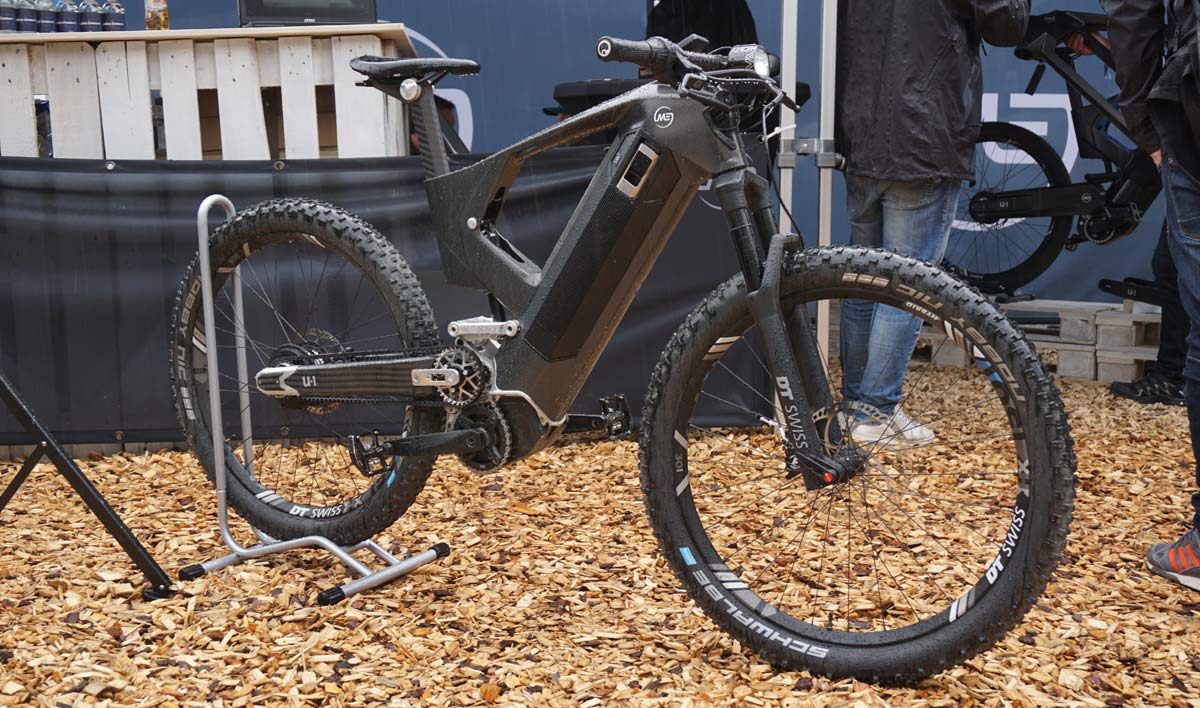
When you look at the future of the automobile, it’s looking more and more electric. Which means the vast majority of battery technology advancement is going to be driven by the automotive industry. And battery improvements are the main way that e-bikes are going to get lighter, faster and longer range. Electric vehicles are also more and more likely to become “last mile” delivery methods, using small cargo vans and bikes to deliver our increasingly online purchases. Some of those “vans” may look more like trikes with basic enclosures, others might be bakfiet-style bikes. UPS, DHL, Deutsche Post and others are already using them for urban delivery. Regardless of all the forms they’ll take, there’s little doubt many of these will be branded with well known automobile names. There’s several reasons for that.
First, as one major brand’s PM (who asked to remain anonymous) proposed, what are general consumers more likely to buy – a high tech electric powered “vehicle” from Tesla? Or from Haibike? Nothing against Haibike, they’re actually pushing the boundaries of e-bikes and we really like what they’re doing. But for most non-cyclist consumers looking to drop $5,000+ on an occasional use alternative to their car, who do you think they’re going to trust? And where do you think they’re going to look? If they already own a Tesla, and Tesla is selling e-bikes through their dealers, would that customer really go to a bike shop?
Second, as the automakers continue to develop electric battery and motor tech, they’ll be looking for more ways to use them to defray those development costs. In Europe, e-bikes are almost the norm anymore. They’re literally everywhere. But in the US, there’s little brand awareness outside of the cycling community, which means there’s massive opportunity for a well-known car brand to own that market. Ford is already dipping their toes in the water by helping to develop car-to-bike awareness and safety tech. Volvo is, too. And Maserati just launched a full lineup of e-Bikes developed with Diavelo, which is owned by Accell Group (Raleigh, Lapierre, Ghost, etc.) and is promoting their consulting business to bicycle and automotive partners alike.
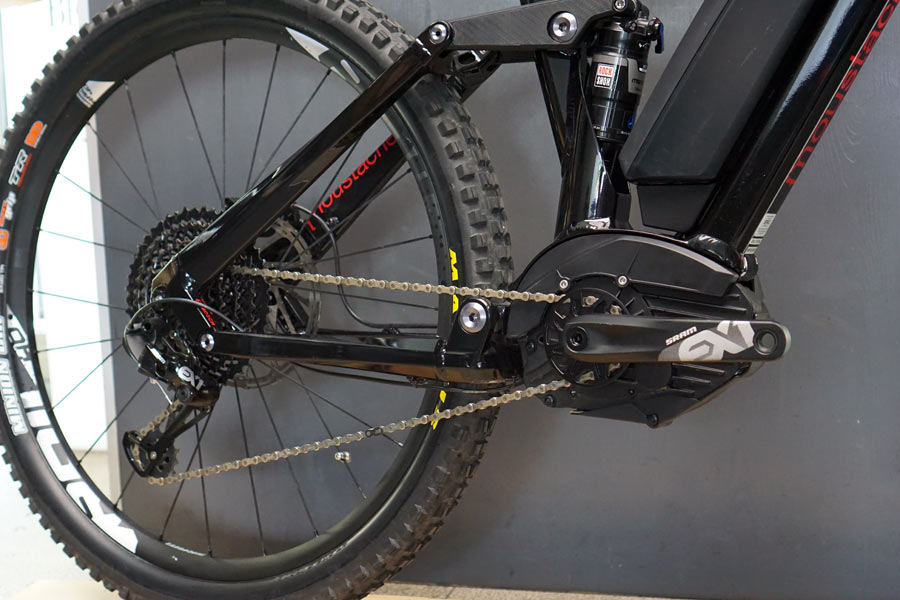
So, where does this leave bicycle brands and component manufacturers? One concern is that the automotive brands have infinitely greater R&D resources and can develop most of what they need on their own. And if they put their weight behind it, we could see greater bike-friendly infrastructure come to our cities. Which is good. Great, actually.
But what if the bicycle brands we know and love are left behind? It’s a legitimate concern, and the smart brands are trying to figure that out now. SRAM has their eBike-specific EX1 drivetrain group, but as we discussed in our Drivetrain Trends story, the future may not be the derailleur and cassette we’re all used to.
Want more e-bike news? Check out our sister site, e-Bikerumor.com, for the latest tech and coverage of electric road, mountain, commuter and touring bicycles.
